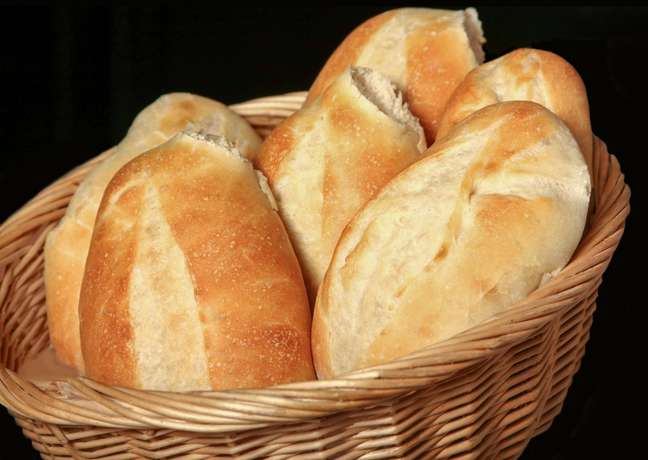In São Paulo, 25 million loaves are sold every day, from those that use a premix to those that ferment for 18 hours.
When looking at the numbers of French bread in Brazil, it is natural to be afraid. After all, this food, so central to the Brazilian table, drives a gigantic industry: according to the Brazilian Association of the Bakery and Confectionery Industry (ABIP), 25 million loaves are sold every day in São Paulo and, in all Brazil, there are more than 70,000 bakeries.
“During the existence of bread, we had many variations. We had the cane, the mini-cane. But it was the French bagel that fell into the Brazilian taste,” says Rui Gonçalves, president of Sampapão, who represents the bakery and the pastry segment from Sao Paulo. “It’s the perfect size, it’s delicious when buttered. There is no sandwich without bread or bread and butter without French bread. Making a ciabatta is not the same thing.

To date, however, its history is somewhat nebulous. There was already the custom of making bread in Brazilian lands, but it was in the 1920s that national agribusiness began to develop. It is believed that, at this time, the elite traveling to Europe imported a small sandwich that was made, in Paris, with a golden crust – a precursor to the baguette. Gradually, the bakers used the knowledge here to adapt it.
Dominated by Portuguese families, the bakeries added sugar and fat to the water, flour and salt. Meanwhile, the sourdough has been replaced by the organic one to speed up.
“Before the war the French had this smaller bread, not the baguette. Today they don’t have it anymore and the baguette has become the most traditional bread,” says Helena Mil-Homens, baker of S. boy and who studied bread-making in France, the alleged cradle of French bread. “When the Brazilians started going to Europe, they came back here with that in mind. It worked, it became popular, especially in the South and Southeast regions.”
transformation of the sandwich
Today, however, the bread has a different face and also goes with a declining quality. Nowadays, bakeries use a premix (4% protein) to make French bread, which also has chemical and anti-mold additives. It also has a high sodium content to structure the dough and a lot of yeast to speed up fermentation. Which generates a non-nutritious and difficult to digest bread, causing gastric bloating.
To give you an idea, the best national flour on the market comes with 9% protein and, in some bakeries, like Sacred Boulangeriefermentation lasts an average of 18 hours.
“It is a staple food product and therefore a low cost is sought. As a result, most bakeries use this premix,” says Fábio Freitas, owner of Sagrado Boulangerie. “We do not use this type of ingredient. They are products developed by selecting one by one of the inputs, selecting the best flours. We are looking for the best flavor of French bread combined with a good diet”.
Asked about the quality of French breads in Brazil from this premix, Rui Gonçalves, of Sampapão, says there are other important “ingredients” in the preparation. “I often joke that good French bread is made with love,” says the representative of the bakers. It needs to be well toasted, have beautiful lashes and have the happiness of growing the right size. “
To recognize good bread, some tips. First, it must be symmetrical, slightly oval and resilient: when pressed, it must return to its original shape. Also, the cone must be golden and shiny. The crumb must be white, without spots, with a soft and elastic consistency. Finally, the flavor must be delicate, slightly acidic and not very sweet, without ever pulling too much for an excessively salty or fatty taste.
Kingdom threatened?
With this decline in the quality of bread, degraded with the premix, one wonders if there is room for the growth of some other type of bread in the Brazilian bakery scenario.
However, entrepreneurs, bakers and experts say: the reign of the bagel is still absolute. “People are starting to look for alternatives,” continues Fábio of the Sagrado Boulangerie. “On the other hand, French bread accounts for over 50% of this bakery market. It is very difficult, in the short and medium term, to ensure that French bread is not among the 3 or 4 items in the bakery. Staple food “.
Furthermore, there is something that goes beyond: tradition. “People like to go and buy bread. They like to queue, greet the girl at the counter. It’s a routine,” says Helena Mil-Homens, of St. boy According to her, what is changing is that people want know more about how that bread gets to them. “People ask what we put in the bread and we say we actually take things away. They are happy to know that it is bread made more like the old days. It has a lot of wholesomeness and a hipsterization of the thing, which is welcome to the market. to meet the baker and try different bakeries “
Source: Terra
Benjamin Smith is a fashion journalist and author at Gossipify, known for his coverage of the latest fashion trends and industry insights. He writes about clothing, shoes, accessories, and runway shows, providing in-depth analysis and unique perspectives. He’s respected for his ability to spot emerging designers and trends, and for providing practical fashion advice to readers.






-t4ibkqt14qpk.jpg)
